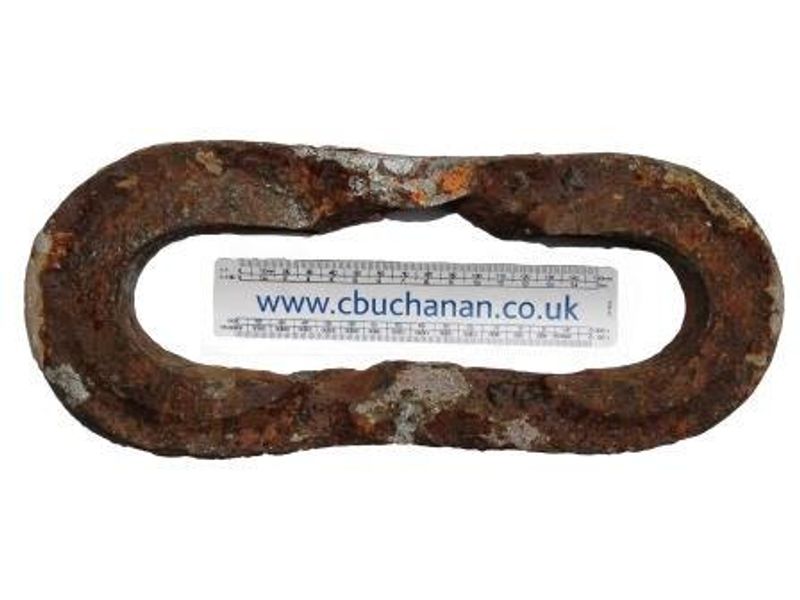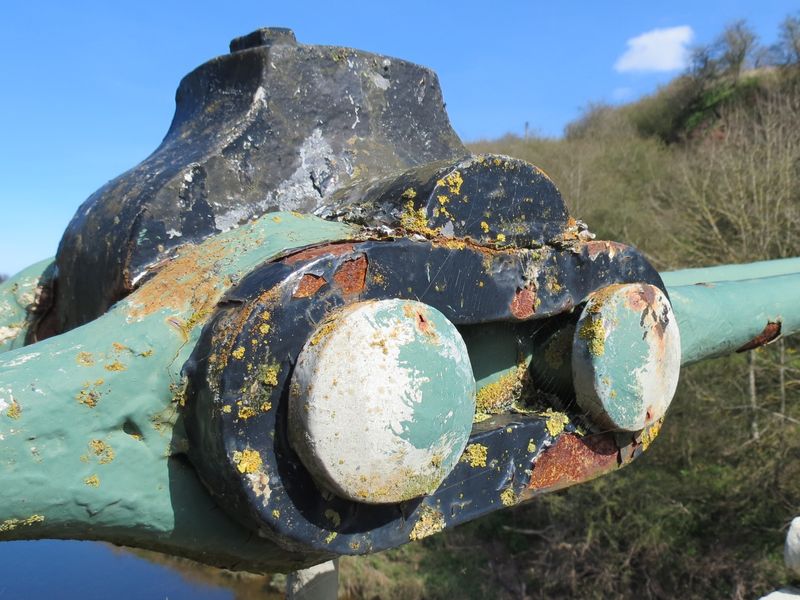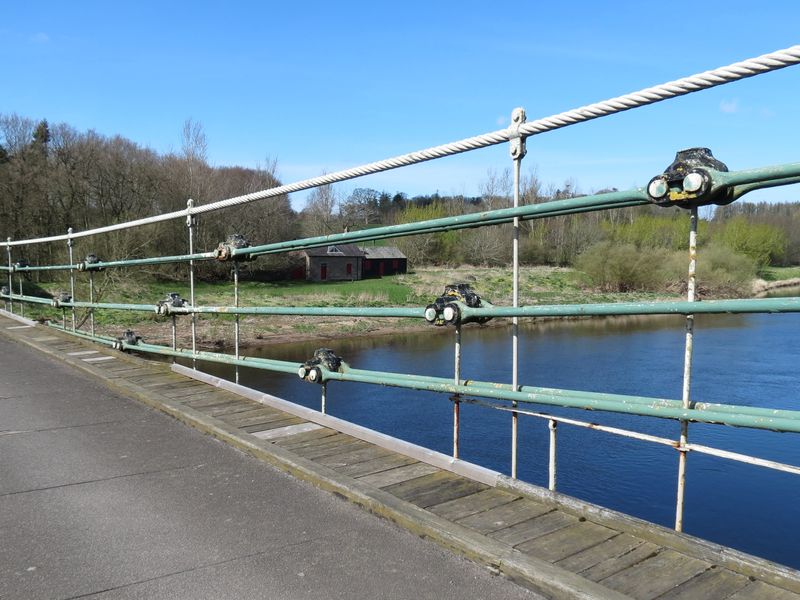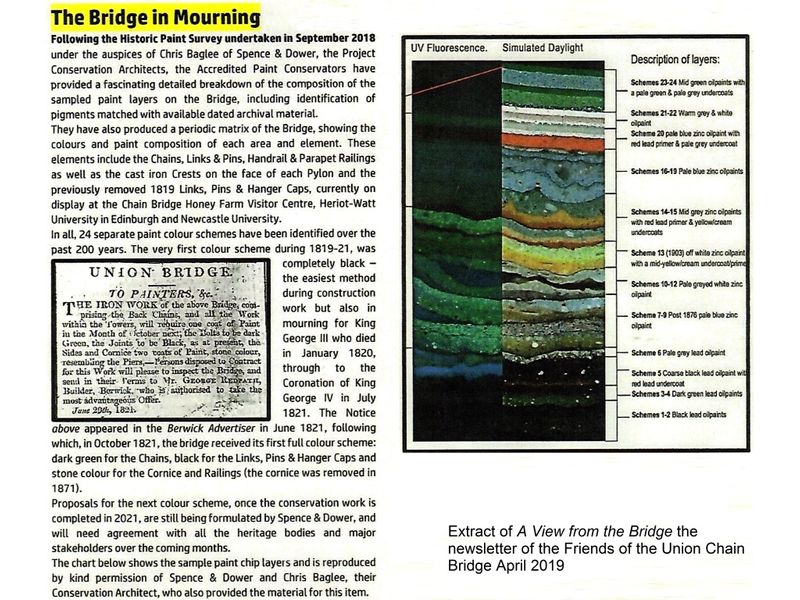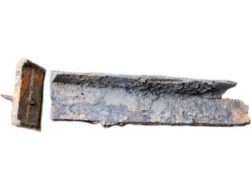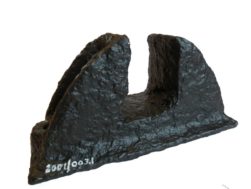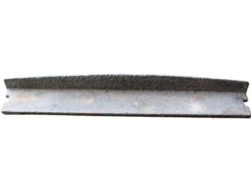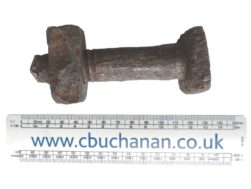Description
Interconnecting wrought iron chain link from Capt Samuel Brown’s Union Chain Bridge over the Tweed at Paxton, Berwickshire 1819-20. Link dimensions: 11.5 in (292 mm) x 1.25 in (32 mm) square.
This short link (with pins) connected 15 ft (4.5 m) x 2 in (51 mm) diameter eye-bar links together. A pin that was used with this link can be seen here https://ice-museum-scotland.hw.ac.uk/producct/1981-001-2
For an exploded diagram of the chain link connection assembly see diagram_of_chain_knuckle_components.
The Union Bridge (also called Union Chain Suspension Bridge or Union Chain Bridge) is a suspension bridge spanning the River Tweed near Paxton, Berwickshire. It was opened in 1820 and at the time was the longest wrought iron suspension bridge in the world with a span of 137 m (449 ft). It was the first vehicular bridge of its type in the United Kingdom and today it is the oldest suspension bridge still carrying road traffic. It is a Category A listed building in Scotland and a Grade 1 listed building in England. It is a Scheduled Ancient Monument in both countries.
The bridge was designed by a Royal Navy officer, Captain Samuel Brown. Brown’s first design for the bridge was prepared in 1817 and the plans were reviewed by the eminent Scottish civil engineer John Rennie who asked for changes to the design of the stone abutments and towers. A portrait of Captain Brown (on loan from the Royal Pavilion, Libraries and Museums, Brighton) can be seen in the entrance hall in the nearby Paxton House.
In 1903 the bridge was strengthened by the addition of steel cables. An extensive programme of renovation work was undertaken between 1974 and 1981 which included the removal and replacement of defective chain links with spheroidal graphite cast iron links. The chain link and pin were removed during these renovation works. A comprehensive refurbishment and rebuild is currently underway (2020). The works started in 2020 and are due for completion in 2023.
Paint chips from both the pin and link held by the museum were used by accredited paint conservators to provide a breakdown of the composition of the sampled paint layers on the bridge, including identification of pigments matched with available dated archival material. In all, 24 separate paint colour schemes have been identified over the past 200 years. The very first colour scheme during 1819-21, was completely black — the easiest method during construction work but also in mourning for King George III who died in January 1820, through to the Coronation of King George IV in July 1821 following which, in October 1821, the bridge received its first full colour scheme: dark green for the Chains, black for the Links, Pins & Hanger Caps and stone colour for the Cornice and Railings (the cornice was removed in 1871). (Ref: A View from the Bridge [newsletter] for the Friends of the Union Chain Bridge, April 2019. See Image 6.)
For more detailed archaeological information on the Union Chain Bridge see an As-Existing Photographic Record undertaken for Northumberland County Council here.

